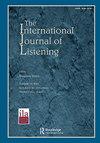综合认知理解理论
Q1 Arts and Humanities
引用次数: 25
摘要
本文提出了一个综合的阅读和听力认知理论,该理论借鉴了最大限度的理解理论,并强调了自下而上和自上而下加工的作用。理论框架借鉴了以往的研究成果,并将其整合成一个连贯的、合理的叙述,以解释和预测对书面和听觉输入的理解。该理论附有一个模型,该模型图解地表示了理论的基本组成部分和所描述的理解机制。该理论进一步强调了感知和单词识别(在阅读研究中研究不足)、情境模型(在听力研究中缺失)、心理意象(在两种研究中都缺失)和推理的作用。该理论的稳健性是根据波普尔(1959)采用的科学理论的原则来讨论的。本文章由计算机程序翻译,如有差异,请以英文原文为准。
An Integrated Cognitive Theory of Comprehension
This article proposes an integrated cognitive theory of reading and listening that draws on a maximalist account of comprehension and emphasizes the role of bottom-up and top-down processing. The theoretical framework draws on the findings of previous research and integrates them into a coherent and plausible narrative to explain and predict the comprehension of written and auditory inputs. The theory is accompanied by a model that schematically represents the fundamental components of the theory and the comprehension mechanisms described. The theory further highlights the role of perception and word recognition (underresearched in reading research), situation models (missing in listening research), mental imagery (missing in both streams), and inferencing. The robustness of the theory is discussed in light of the principles of scientific theories adopted from Popper (1959).
求助全文
通过发布文献求助,成功后即可免费获取论文全文。
去求助
来源期刊

International Journal of Listening
Arts and Humanities-Language and Linguistics
CiteScore
4.70
自引率
0.00%
发文量
16
 求助内容:
求助内容: 应助结果提醒方式:
应助结果提醒方式:


